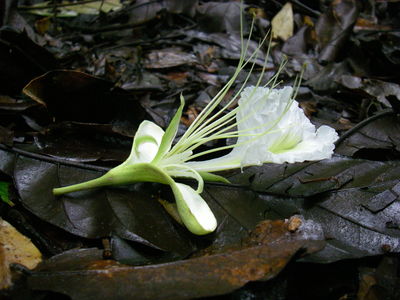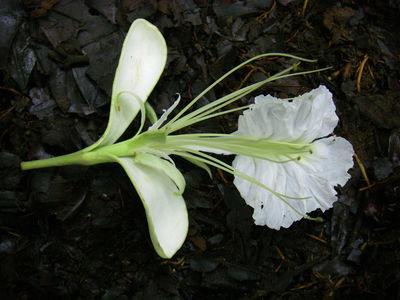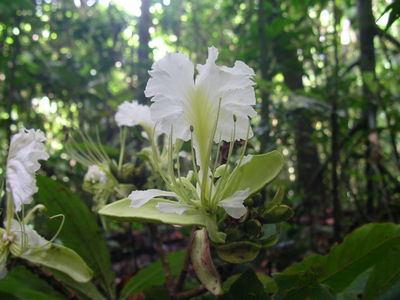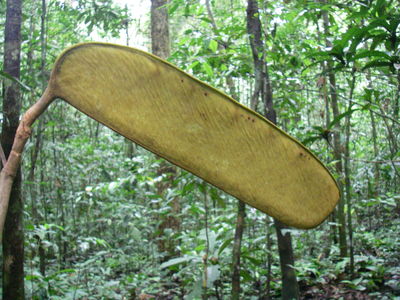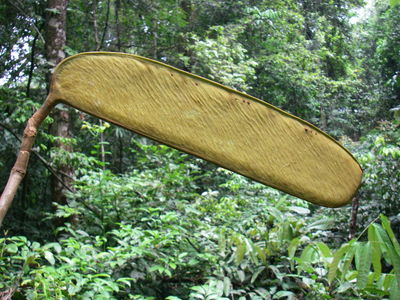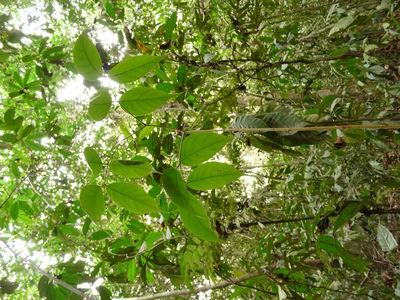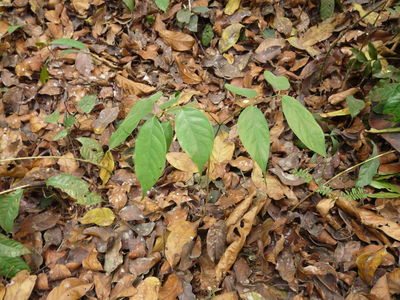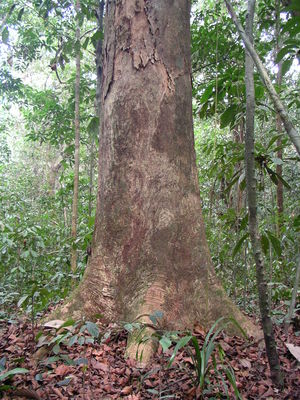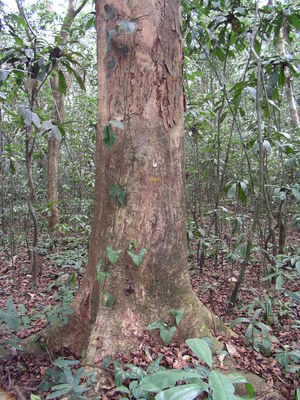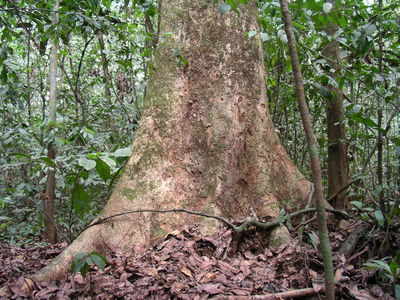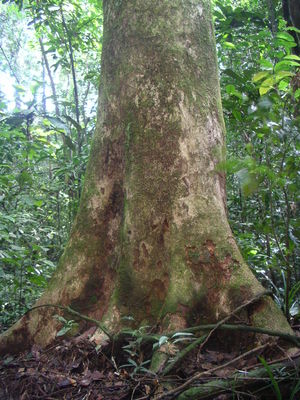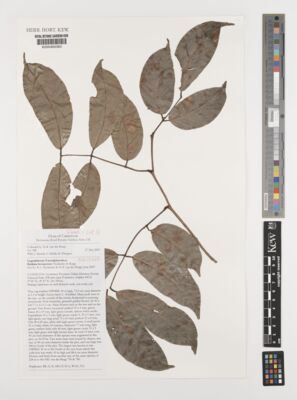Geography and distribution
Berlinia korupensis occurs in the Southwest Province in Cameroon (Africa). It was found during the set-up of a permanent plot in Korup National Park. The set-up of this plot was supervised by Professor David Newbery of the University of Bern. Only 17 trees were found, and all of these were growing inside or near to this plot. Berlinia korupensis has not been found elsewhere in Korup National Park. It is one of the rarest tree species in the park.
Description
This species is a forest tree that can exceed 40 m in height and can have a trunk nearly 1 m in diameter. The flowers are large, white and showy with one petal much longer and wider than the other four. The pods are oblong and flat, and measure up to 33 cm long by 9 cm wide and contain 1 to 4 seeds.
Berlinia korupensis has a trunk supported by triangular buttresses, of about 20 to 30 cm thick, up to about 1.5 m high and extending out to around 0.7 m. The bark is smooth or a little flaky, and of a striking whitish light brown colour. The crown is hemispherical and up to 30 to 35 m diameter.
The seeds of Berlinia korupensis are dispersed by explosive pod dehiscence (the pods burst open to release the seeds). When a mature pod is exposed to sunshine or dry air, it begins to dry. The two drying valves of the pod are predisposed to curl up in different directions, and as a result tension builds up between them. The corky connecting layer between the two valves keeps them attached and thereby flat, but as the drying continues, the tension eventually becomes too great and the pod bursts suddenly and forcefully. The two valves twist rapidly, in opposite directions, and the seeds are ejected at speed.
Many seeds drop beneath the crown of the parent tree, but some are dispersed to short distances from the edge of the crown. The maximum explosive dispersal distance is unknown but we speculate that it is probably in the range of 30 to 50 m. It is also unknown if there is any secondary seed dispersal, for example by animals or rivers.
Threats and conservation
Only 17 individuals of Berlinia korupensis are known, and these were all found at a single location. They are growing in a remote part of Korup National Park (in Cameroon) which is both a World Heritage Site and a protected area. Tourists seldom go there, but researchers sometimes work in the area.
The area is often visited by poachers who are slowly diminishing the animal population of the park. This has large consequences for the ecology of the vegetation in the park, and may affect Berlinia korupensis trees as well. The presence of Berlinia korupensis , and other rare plant and animal species, in Korup National Park shows how important this park is for the conservation of biodiversity.
Where to see this at Kew
This species is not currently in cultivation at Kew. Preserved specimens of Berlinia korupensis can be found in the Kew Herbarium (where they are made available by appointment to researchers), and seven other herbaria worldwide (two in Cameroon, four in Europe and one in the USA).
Details and images of Berlinia korupensis specimens can be seen in Kew's online Herbarium Catalogue.

_crop%20(Main)_0_fullsize.jpg)

